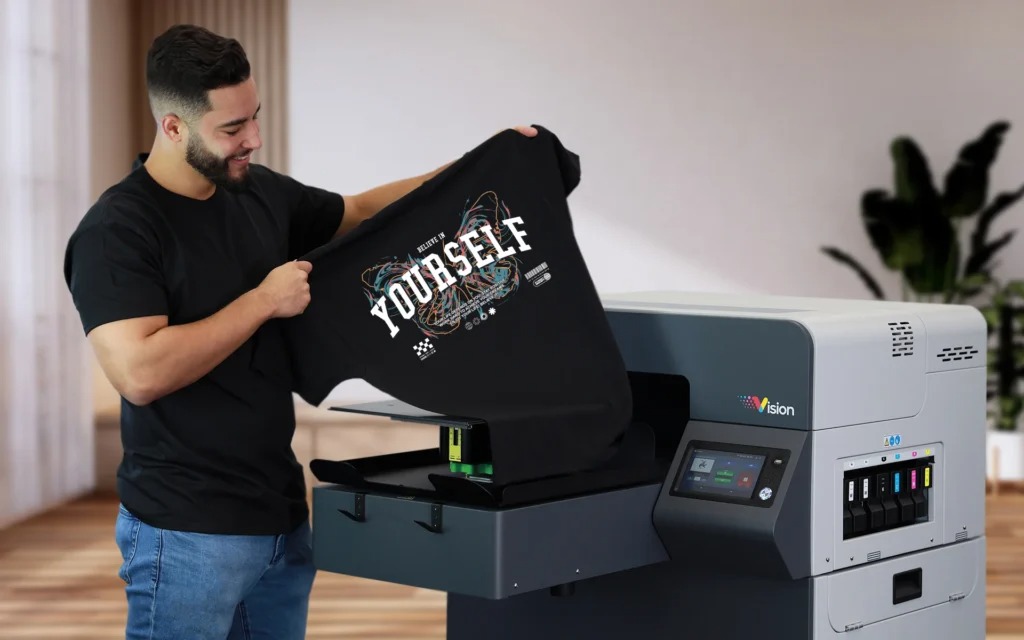In today’s world, custom apparel is more popular than ever. From personalized gifts to fashion statements, custom-printed T-shirts have become a staple in the fashion industry. At the heart of this revolution lies the t-shirt printer, an essential tool that allows businesses and individuals to create unique designs on shirts tshirt printer, contributing to the flourishing of the custom apparel market. In this article, we will delve into what a T-shirt printer is, how it works, and why it’s a game-changer for businesses and creators alike.
What is a T-Shirt Printer?
A T-shirt printer is a machine designed to print designs, logos, images, or text directly onto a T-shirt or other fabric materials. These printers come in various forms, from screen printing machines to advanced direct-to-garment (DTG) printers. The technology behind these printers has evolved significantly over the years, making custom T-shirt printing more accessible, affordable, and efficient than ever before.
Types of T-Shirt Printers
-
Screen Printing Machines
Screen printing is one of the most traditional methods of T-shirt printing. It involves creating a stencil, or “screen,” and using it to apply layers of ink onto the fabric. Screen printing is ideal for mass production because it allows for high volumes of prints in a short time. While the setup can be time-consuming, it is highly cost-effective for large orders. -
Direct-to-Garment (DTG) Printers
DTG printers are a modern solution for printing detailed, multi-colored designs onto fabrics. They work similarly to inkjet printers by spraying water-based ink directly onto the fabric. DTG is especially popular for small orders and intricate designs because it requires minimal setup and can print full-color graphics without the need for screens or transfers. -
Heat Transfer Printers
Heat transfer printing uses a heat press to transfer a design from a special transfer paper onto a fabric. This method allows for vibrant, full-color prints and is perfect for smaller orders or customized designs. The process is quick and relatively simple, making it a favorite for small businesses and DIY creators. -
Sublimation Printers
Sublimation printing involves turning solid dye into gas without passing through the liquid state and infusing it directly into the fabric. This method produces vibrant, full-color designs that won’t fade over time. Sublimation is primarily used for polyester fabrics and is favored for all-over prints, making it ideal for custom sportswear and promotional apparel.
How Does a T-Shirt Printer Work?
The process of printing on a T-shirt depends on the type of printer used, but generally, the process follows these steps:
-
Design Creation
The first step is creating or selecting the design that will be printed. This is usually done on a computer using graphic design software. High-resolution images and vector files (such as PNG or SVG) are the preferred formats to ensure quality prints. -
Pre-Treatment
Some printers, especially DTG, may require a pre-treatment process. This involves applying a special solution to the fabric to improve ink adhesion, ensuring the design lasts longer and looks more vibrant. -
Printing
Once the design is ready and the fabric is prepared, the printer applies the design to the T-shirt. For screen printing, the ink is pushed through a mesh screen onto the fabric, while DTG printers spray the ink directly onto the shirt. -
Curing
After printing, the ink must be cured or dried. For screen printing, this is typically done using a heat press or conveyor dryer. In DTG printing, the shirt is often placed in a curing machine, which uses heat to set the ink. -
Finishing Touches
Once the print is dry, the T-shirt may undergo additional finishing processes, such as trimming or ironing, to ensure it meets quality standards before being packaged and shipped.
Why T-Shirt Printing Is Popular
-
Personalization
Custom T-shirts allow individuals to express their creativity and uniqueness. Whether it’s a favorite quote, a family reunion logo, or a custom business design, personalized apparel has become a way to stand out and make a statement. -
Low-Cost Startup
With the advent of affordable T-shirt printers, starting a custom apparel business has never been easier or cheaper. Entrepreneurs can invest in a relatively low-cost printer and start creating designs from home or in small shops without needing to purchase large quantities of pre-made stock. -
On-Demand Printing
Advances in T-shirt printing technology have enabled on-demand printing, meaning that products can be printed as needed rather than in bulk. This reduces waste and allows for a more sustainable approach to fashion. Businesses can print only what is required, making it an environmentally friendly option. -
Small Batch Production
Unlike traditional manufacturing processes, which often require a minimum order quantity, T-shirt printers allow for small runs. This makes it easy for designers, artists, and brands to experiment with different designs without committing to large quantities of stock. -
Speed and Efficiency
Modern T-shirt printers are faster than ever before, making it easier to fulfill orders quickly. This is particularly important for businesses that rely on rapid turnaround times for custom orders, such as promotional events or limited-edition drops.
The Future of T-Shirt Printing
The future of T-shirt printing is bright, with continued advancements in technology. Innovations such as eco-friendly inks, improved automation, and 3D printing techniques are pushing the boundaries of what can be done with custom apparel. The rise of sustainable fashion is also encouraging the development of printers and materials that reduce environmental impact.
Moreover, the integration of artificial intelligence (AI) and augmented reality (AR) is expected to take the customization experience to the next level. For instance, consumers may soon be able to visualize how their design will look on a T-shirt in real-time, right from their phones.



